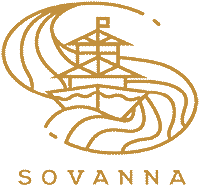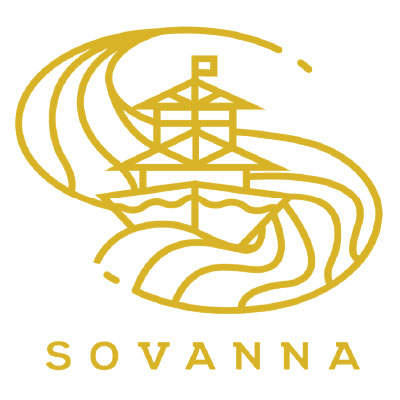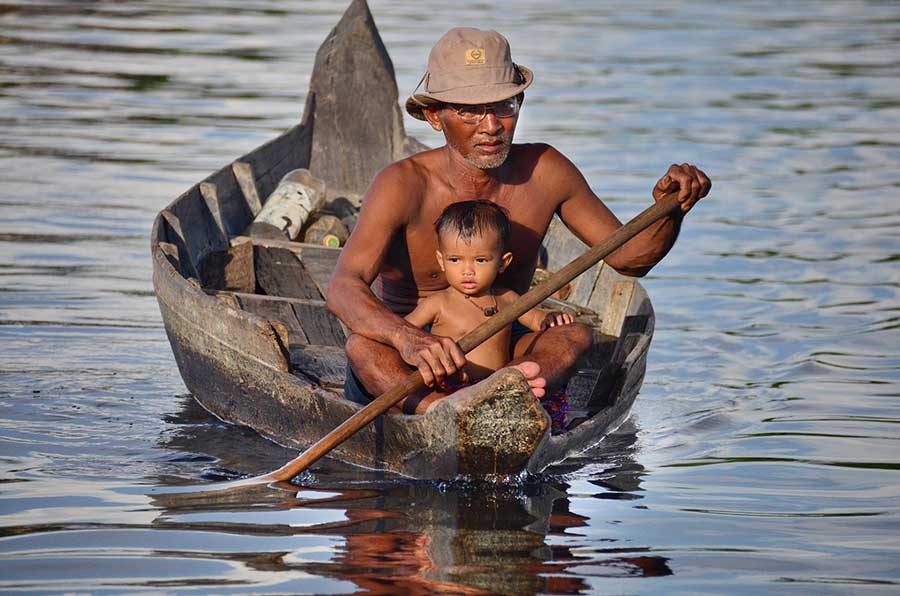The Tonle Sap river is one of only three rivers in the world that experience a flow reversal on a tidal cycle when the mighty Mekong river floods in the monsoon period.
In the Monsoon season (June to November), the melting of Himalayan ice and the abundant alluvial deposits in northern Cambodia contribute to the flooding of the Mekong River. And, the reversal in flow of the Tonle Sap River. The other two rivers where this happens are both in north America. The Hudson in upper New York Bay and the Saint John river that empties into the Bay of Fundy.
The Tonle Sap River connects to the Great Lake bearing the same name.
This natural reservoir covering more than 3,000 Km2, floods the area around it, irrigating neighbouring lands. The lake has an average depth of around 1.5m, and when it floods, this can rise to as much as 8m
The Tonle Sap Lake is the main means of transport in this part of the country and provides most of the fish consumed in this part of Cambodia. Rice cultivation is essential to the life of the inhabitants of Cambodia, the annual flood of the Tonle Sap is perceived by local people as a blessing. And, a welcome source of income for the 3,000,000 people living around the lake.
More than 400 species of fish take advantage of the opportunity to lay their eggs on the flooded land, producing a considerable amount of protein to the soil and food for a wide variety of aquatic and other animals. Certified as a nature reserve by UNESCO in 1997. It is the largest biosphere in this part of the world. And, produces 80% of the protein consumed by the inhabitants of the region.
During the rest of the year, the lake flows into the Tonle Sap River and on into the Mekong. A phenomenon that sees the reversal of the flow of the river along its entire length. And which permits a variety of immature fish to migrate into the Mekong river.
During the rest of the year, the lake flows into the Tonle Sap River and on into the Mekong.
A phenomenon that sees the reversal of the flow of the river along its entire length. And which permits a variety of immature fish to migrate into the Mekong river.
Le saviez-vous ? le fleuve Tonle sap est l’un des seuls fleuves au monde qui deux fois par année inverse le sense de son courant. En effet, Le fleuve Tonle Sap est relié au grand Lac du meme nom. Durant la saison humide (de juin a novembre) la fonte des glaces de l’Himalaya plus les abondantes alluvions dans les pays du nord du cambodge contribuent au remplissage par le fleuve Mekong de ce réservoir naturel de plus de 3000 Km2.
Le lac Tonle Sap vas alors multiplier sa superficie par plus de 5 fois irriguant les terres avoisinantes et produisant la principale source de revenus pour plus de 3 000 000 de personnes vivant autour du lac.
Le lac Tonle Sap est en effet le moyen de transport principale dans cette partie du pays. Et, produit aussi la presque totalité du poisson consommé dans la région.
La culture du riz étant indispensable a la vie des habitants du Cambodge. Les crues annuelles du Tonle Sap son perçue par les locaux comme une bénédiction qui vas permettre d’irriguer la terre et fertiliser son sol.
D’une profondeur moyenne d’environ 1.5 m le Tonle sap peux alors monter jusqu’à 8 m. Sous sa surface, ce sont alors plus de 400 espèces de poissons qui vont profiter de l’opportunité pour pondre leurs œufs sur les terres inondées produisant alors un apport considérable de protéines a la terre et nourriture pour une large variété d’animaux aquatiques et terrestres.
Qualifié de réserve naturelle par L’UNESCO en 1997. Il est la plus grande biosphère de cette partie du globe. Et, produit annuellement 80% des protéines consommées par les habitants de la région.
Durant le reste de l’année, le lac va alors se déverser à son tour par la rivière Tonle Sap dans le Mékong
Produisant alors un phénomène unique au monde. l’Inversion du courant d’un cours d’eau sur toute sa longueur. Et, permetant aussi a toute une varieté d’alevins (jeunes poissons) de migrer dans le grand fleuve.
Sovanna is located in the Daun Penh district of Phnom Penh. A 4-minute walk from Riverfront Par. Half a kilometre from Sisowath Quay and a 13-minute walk from Vattanac Capital. The boat is 3.1 km from Diamond Island Convention and Exhibition Centre. And, 3.7 km from Aeon Mall.
Popular points of interest near the apartment include Wat Phnom, Chaktomouk Hall and Royal Palace Phnom Penh. The nearest airport is Pochentong Airport, 11.3 km from Sovanna.
This is our guests’ favourite part of Phnom Penh, according to independent reviews.
- Follow us on Facebook | See more on YouTube
- Read our blog post “Cruising on the Tonle Sap River in Cambodia“


